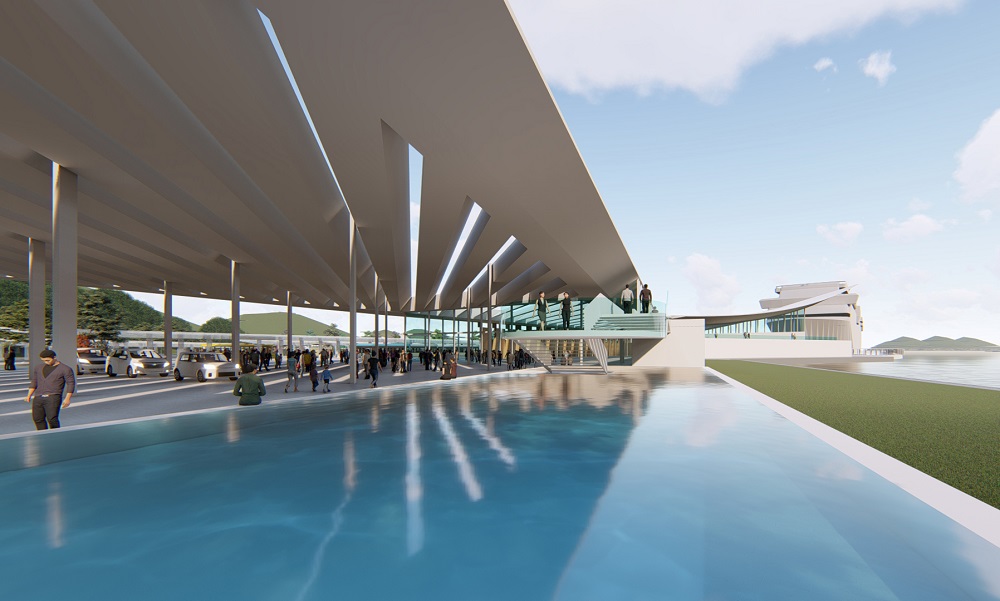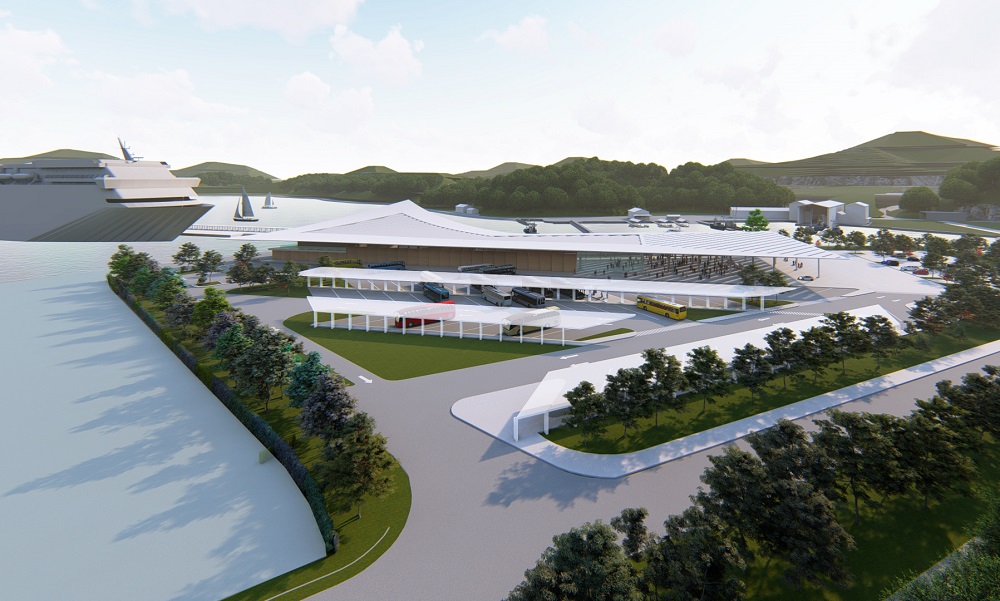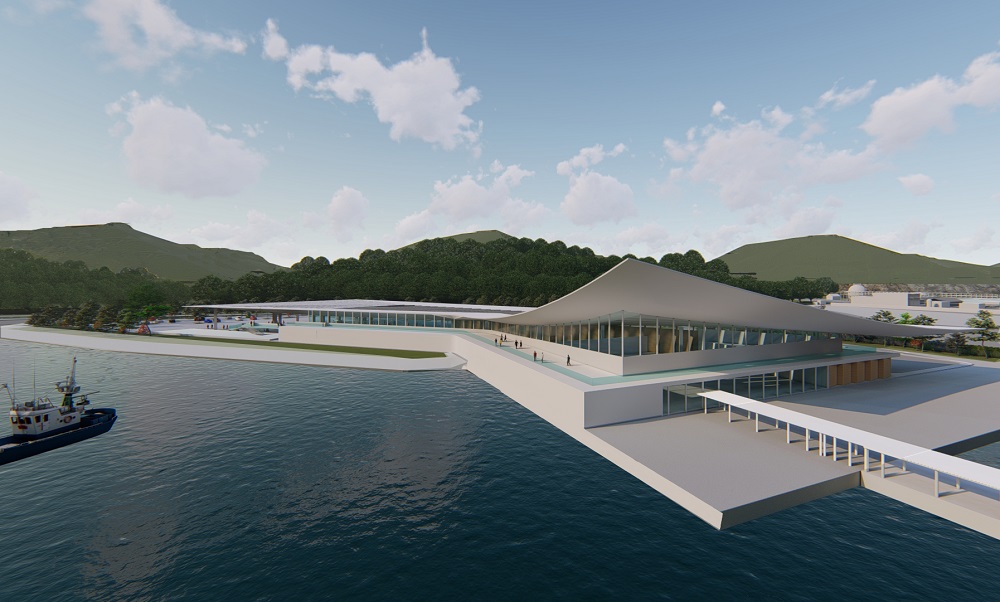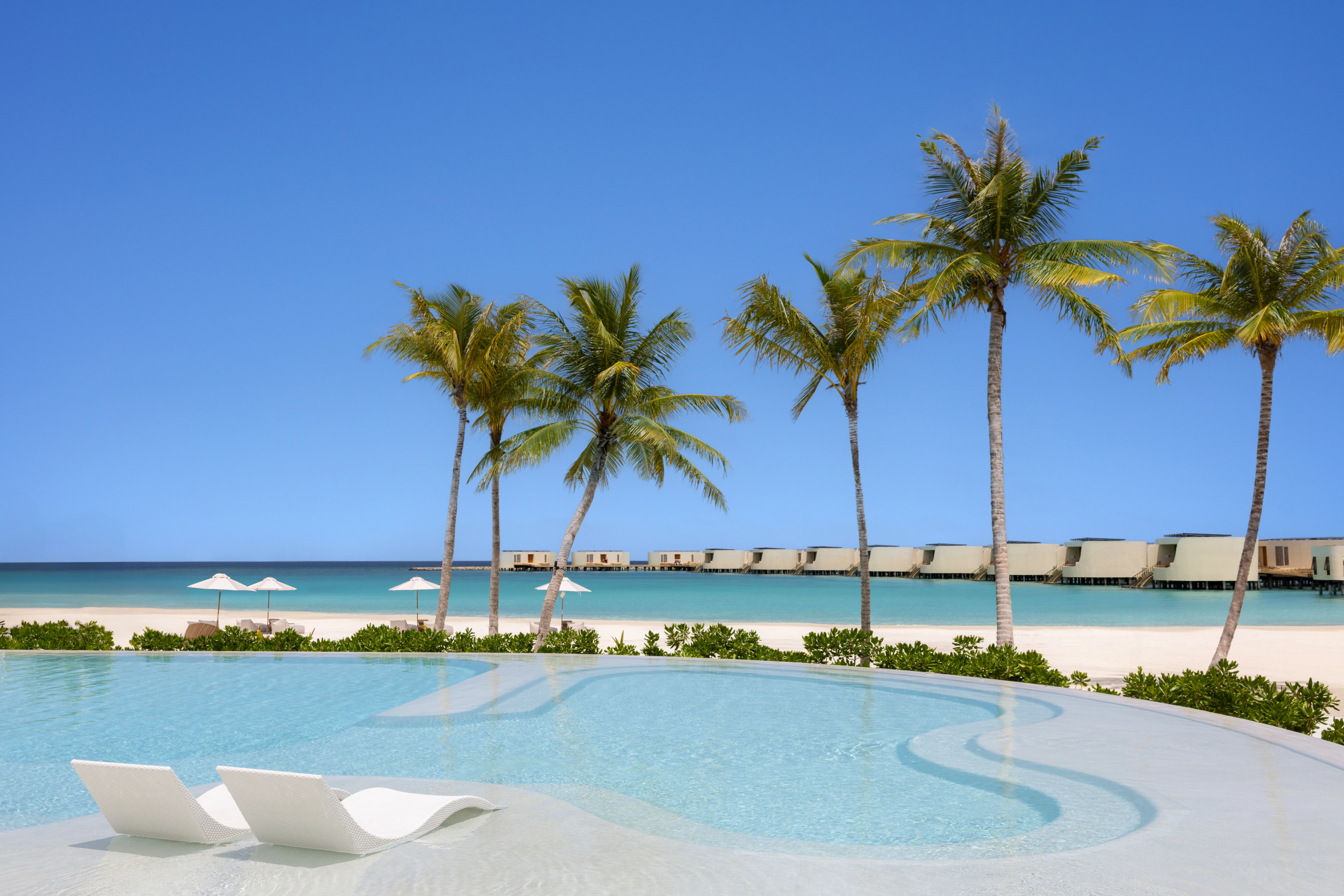 Rendering of Uragashira Cruise Terminal by Berenblum Busch Architects (BBA)
Rendering of Uragashira Cruise Terminal by Berenblum Busch Architects (BBA)Berenblum Busch Architects (BBA), a Miami-based global architecture, planning and interior design firm, has unveiled its design for Carnival Corporation’s first cruise terminal in Japan.
The anticipated facility called Uragashira Cruise Terminal will be situated between Sasebo Bay and the mountains. The terminal's one-storey building, featuring a minimalist design, will serve as a port-of-call for cruise ships travelling from mainland China to Japan.
With a strategic location in Japan’s port city of Sasebo, Uragashira Cruise Terminal will support the Japanese government’s plans of developing its ports and increasing the number of cruise travellers in the region.
"A landmark project for Carnival Corporation"
"We are honoured to be a part of such a landmark project for Carnival Corporation and the significance it carries for the brand and Japan,” said BBA's founding principal, Gustavo Berenblum. “Our goal was to design a terminal that includes all the modern functions and amenities necessary for creating an elevated guest experience, but that also felt as it’s always been there.”

BBA's design puts its focus onto the terminal's curving roof, providing 'sawtooth' skylights that face the north, maximising the natural light resource. The roof’s long overhead will serve as a cooling mechanism for the building, as well as a shield for the terminal’s glass walls and steel frame.
“The design concept for Uragashira was to create a ‘cruise terminal in a nature park.’ Sasebo is an area known for its 10,000 islands and we want travellers to feel like they’re in a park and not a parking lot. We accomplished this by respecting and conforming with the surrounding nature and adding additional vegetation to the site,” added Berenblum.

As the region is prone to typhoons and earthquakes, BBA’s design of the 50,000-square-foot terminal consists largely of concrete, as well as glass and steel, which will be locally-sourced. The program includes functions such as retail spaces, passenger waiting area, immigration, customs, offices, a second-floor terrace overlooking the sea, a public plaza, a designated car and bus drop-off area, and parking.
The terminal is expected to be operational by 2020, ahead of the Tokyo Olympic Games.




















